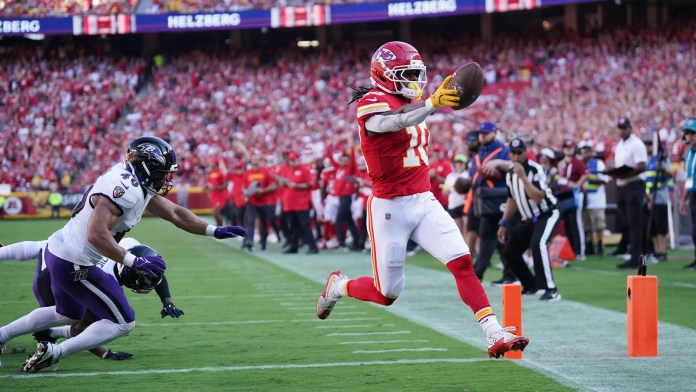Nicole Kidman and Keith Urban have separated after 19 years of marriage, ending one of entertainment’s most watched cross-Pacific partnerships and sending a ripple through two industries that long embraced them as a rare model of glamour, grit and endurance. The split—confirmed on Sept. 29 by a leading celebrity publication and echoed by a global wire service—follows a summer of growing distance, with the country star moving into a separate residence in Nashville while the Oscar winner worked abroad.
Representatives for both have not issued formal statements. Yet the contours of their lives in recent months have been plain: she wrapped production on a high-profile sequel and returned to family in Australia; he carried on with a US tour. Australia’s public broadcaster summarized early reporting that the living arrangements changed in early summer. The couple’s circle, always discreet, has kept the particulars close. What remains public is the sweep of a two-decade story—how two artists with punishing schedules built a home, raised two daughters and learned, for a long time, to navigate fame’s noisy corridors together.
A partnership that spanned continents—and industries
They met in Los Angeles in early 2005 at a gala honoring Australians, when both were already global names: she an Academy Award recipient with a formidable art-house résumé and mainstream reach; he a chart-topping guitarist and vocalist whose blend of country and pop broadened the genre’s audience. Their wedding, held the following June in Sydney, doubled as a national moment—flashbulbs outside, church bells within—and announced a partnership that never seemed to choose between Hollywood and Music City. It embraced both, a fact quietly reaffirmed by the industry trades and their rivals as news of the breakup spread.

Over the next two decades, they would step onto carpets and stages together with a practiced ease: hand on shoulder, whispered joke, the kind of intimacy that eases the performance of public life. The cadence became familiar—a premiere for her, a residency or tour stop for him—and it functioned as a promise that personal anchorage was possible amid professional velocity. Along the way, she curated images that stuck in culture’s memory: a 2021 Greco-inspired editorial moment; red-carpet turns that included one of the most lavish Oscar gowns of the century.
Different seasons, diverging routines
Their separation, as reconstructed from multiple reports, appears to have taken shape across the Northern Hemisphere summer, with the musician relocating while continuing to play large arenas in the United States. A wire dispatch noted the move to a separate residence, and a London-to-Nashville rhythm made coordination harder than usual. A Guardian timeline likewise placed the shift in living arrangements in June, even as anniversary posts surfaced on social media.
Friends of the couple have long said ritual helped them handle distance—daily calls, quick flights, structured pauses—but even ritual can buckle under back-to-back commitments. Tour buses and film sets have their own time zones. In that friction, many marriages lose their footing not with a catastrophic blow but with a slow rearrangement of days, and then rooms. Morning television viewers woke to the confirmation cycle as a breakfast-hour segment framed the news for a mass audience.
Two daughters, two careers, one public
For nearly two decades, the pair spoke of family as their true north and protected their daughters, now teenagers, with notable vigilance. That discretion is likely to continue. If precedent holds, any schooling arrangements will unfold far from social feeds and press lines, emerging, if at all, as simple facts—who attended which event, who traveled where for holidays—rather than as pointed declarations.
Professionally, both arrive at this juncture with momentum. She remains one of the rare actors to move seamlessly between prestige television, boutique dramas and major studio fare. He remains a precision live musician, a draw on festival posters and arena marquees. The question is not whether either can sustain a solo stride. It is how they will recalibrate the balance that long made their partnership hum. For readers tracking awards timetables, this season’s awards calendar offers a reminder of how relentless that cycle can be.

The symbolic weight of a celebrity marriage
Celebrity unions are always freighted with meaning they never asked to carry. Fans and tabloids turn them into mirrors, Rorschach tests for our hopes about love’s durability. This marriage, in particular, became a kind of shorthand: the movie star and the country musician who appeared to meet the chaos of two public careers with lightness and discipline; the couple that showed up for each other’s biggest nights not as extras but as principals in the same story.
They also weathered challenges in plain sight and, at times, acknowledged them. The candor—tempered, careful, but unmistakable—made them feel less like an idea and more like people trying. Years before this week’s developments, their story included an early crisis and recovery that have now been widely revisited. In 2006, for instance, an Associated Press report documented a stint in rehab just months into the marriage. The point of that history is not causality but perspective: endurance is work, and some of that work was public.
Reading the breadcrumbs that were always faint
In hindsight, social media photos and appearances will be sifted for clues: the last anniversary post, the final joint red-carpet shot, a stray interview answer parsed for subtext. But the record suggests nothing like theatrical foreshadowing—no barbed quips, no dual solo turns that made their couplehood look like a brand. If there were cracks visible to the public, they were hairline.
Even so, the reporting to date has hinged less on official pronouncements than on consistent, corroborated details: separate living arrangements, an absence of denial, a timing anchored to early summer. In the absence of theatrics, the story stands on facts—thin, but steady—rather than rumor. For a couple who built their public selves with intention, it tracks.
What comes next
There is a mechanical piece to high-profile splits that rarely makes the headlines: calendars. His near-term dates lock him into a rhythm of load-ins, soundchecks and meet-and-greets. Her release schedule ties her to press obligations, festival stops and, eventually, awards-season rhythms if the work warrants it. Those mechanics will dictate how any formal move—whether toward divorce or a quieter long separation—actually lands. Readers likely will learn as reporters do: in filings, in statements timed to quell a rumor cycle, or in the quiet solidity of a no-comment.
Culture has a habit of seeking parallels, and it will find them. Fox News’s newsroom drama became a kind of lodestar for thinking about institutional power and intimacy on screen; our entertainment desk revisited that arc in a survey of standout performances. The comparison is imperfect, but the impulse is familiar: art and life in conversation, even when the stakes are simply two people deciding how to live.
A ledger of shared history
For all the focus on the present, the past is thick with detail. There was the early courtship at a stateside gala celebrating Australians; the candlelit vows in a hilltop chapel overlooking Sydney’s northern beaches; the dizzying first years when red carpets and nursery runs overlapped; the threshold moments—awards, births, recoveries—that tightened the weave. If you believed in public romance at all over the last two decades, chances are you borrowed some of that belief from them.
Their appeal, finally, was tonal. They were not the couple who made a brand of their togetherness. They did not invite cameras into their kitchen, or turn vacations into content. Instead they treated visibility as an obligation of the work and kept domestic life close. In an era when the market pushes toward perpetual disclosure, they practiced something like resistance. It helped that both seemed to understand how much their separate crafts required of them, and how often those demands could be in tension with a private life that needed time, patience and ordinary days. For broader culture coverage of that tension, see our entertainment desk’s ongoing file.
On privacy, empathy and the modern audience
If the last decade has taught audiences anything, it is that the appetite for real-time updates can be both relentless and misdirected. The genuine human stakes here involve two teenage girls whose parents have decided, for now, to live apart; two working artists who will be asked to transmute personal grief into public performance with almost no runway; and extended families called upon to provide ballast. The proper response from the rest of us is less forensic analysis than modesty: we do not know the private math that produced this outcome, and we do not need to.
That does not mean the story lacks public interest. Celebrity marriages have long been proxies for how work and intimacy coexist, and this one always felt like a stress test of that coexistence across cultures and mediums. The split will prompt the usual roundtables about whether travel, fame, money or the internet itself shortens the shelf life of modern marriage. The fairer reading is more prosaic: long relationships evolve; some endure; some don’t. Even for those who can afford help, distance is real, and so is fatigue.
The legacy of a long run
Nineteen years is not a collapse. It is a tenure. The story of this marriage, like most, will resist a single moral. It offered flashes of art meeting art—her craft sharpening his, his devotion amplifying hers—and years of the unglamorous negotiation that sustains shared life. It gave two daughters a stable home and, by the evidence available, two parents intent on protecting it. If it now becomes two homes, the work of protection does not end. It changes shape.
In the meantime, the public will keep seeing them, separately, doing what they have always done. She will surface on soundstages and festival steps; he will stride under trusses and LED canopies to the opening chord. Reporters will keep asking, gently or otherwise. They may choose silence awhile, or they may eventually speak in the measured tones to which they are accustomed. Either way, their choices will belong to them. For those readers who prefer one page that aggregates developments with restraint, one carefully sourced explainer remains a useful guide.
There is a closing image that suits the story: two professionals at an awards show earlier this year, eyes bright under hard light, red carpet underfoot, a quick exchange that reads half-joke, half-check-in. It is ordinary and indelible—the kind of moment couples collect and carry long after their trajectories diverge. For those who admired them together, it is worth keeping that image, not because it denies the break, but because it honors the long run that came before it.

























